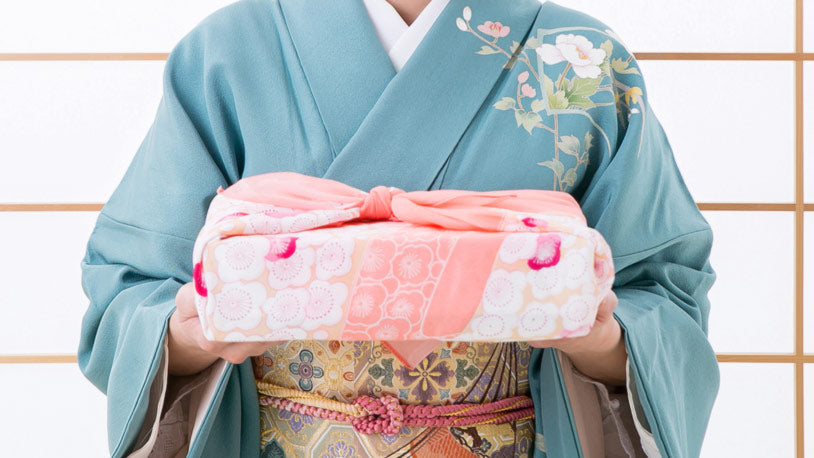The sensitivity for the environment is grow and ancient materials and habits are rediscovered, coming back into vogue in a contemporary taste. The interest in Furoshiki, the Japanese art of wrapping, containing, transporting objects by folding and knotting a fabric, is also making his way in the West. An old tradition that once again shows us the refinement and aesthetic taste so developed in Japanese culture.

Choosing and knotting a Furoshiki is an art that has been handed down from generation to generation in Japan, finding wide use, as well as in the transport of objects, also in the packaging of a gift, in which a silk fabric is usually used. In fact, according to this culture, presenting an object that is not properly packaged is considered unrespectful.

The origin of Furoshiki
There are historical traces of the existence of Furoshiki as early as the Nara period (710-784), when it was used to bandage objects belonging to the imperial family. Subsequently, during the Heian era (794-1185) its use expanded to include the transport and storage of kimonos, used by court nobles.

In the Muromachi period (1392-1573) the courtiers used to take it with them to the large thermal building built by General Yoshimitsu Ashikaga. Known with the term Hirazutsumi, this ancestor of the Furoshiki served to contain the change of clothes to be worn after the bath.

After the unification of Japan and throughout the subsequent Edo period (1603-1868), the arts represented the culmination of the union between elegance and practicality. Functional aesthetics, designed to embellish everyday objects and to raise the spirits of those who use them, is revealed in an attention to detail and love for the material; the daily gesture becomes a ritual that reflects awareness of the ultimate goal of things. The term Furoshiki dates back to this period, during which there is the greatest diffusion of public baths. In fact, the word is composed of "furo" (bath) and "shiki / shiku" (lay). Basically an elegant precursor of the modern bath towel, which was laid on the ground to sit on.

In this era it became a fundamental object also for the working class and widely used for the transport of various objects.

In the early 1900s, Furoshiki faded into oblivion due to the advent of plastic bags. Fortunately, the ecological awareness formed in recent years has allowed its rediscovery and its return to everyday use. Today it has become an elegant fashion accessory, which in addition to telling an ancient tradition becomes a symbol of respect for the environment even in the West.


